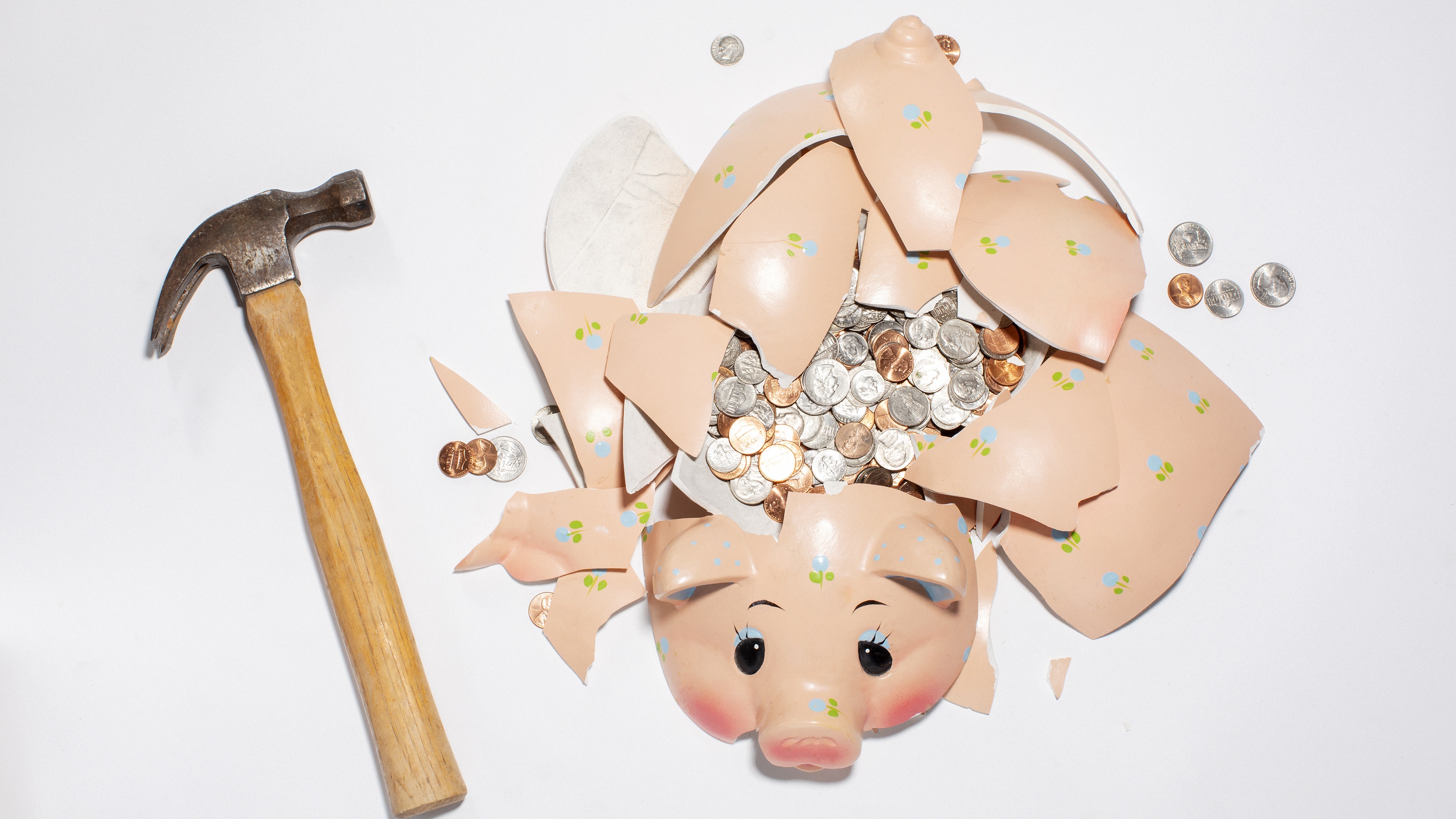Is It Time to Move to Cash? The Father of the 4% Retirement Withdrawal Rule Did.
With markets officially in bear territory, many retirees are anxiously wondering what they should do. The man who wrote the 4% Rule recently shifted to mostly cash, but should you?


Bill Bengen is one of the most influential figures in the financial planning industry. Based on the history of the capital markets since 1926, his research found that retirees could safely spend approximately 4% of their retirement nest egg over any 30-year period. These findings were based on a number of assumptions, including a portfolio investment mix of 55% large-cap U.S. stocks and 45% intermediate-term U.S. Treasury bonds.
Recently, however, Bengen disclosed that he has moved his own personal portfolio to 20% stocks, 10% bonds and the remaining 70% to cash. This news may have some retirees wondering whether they should do the same.
Background on the 4% Rule
For many years, the so-called 4% rule has provided a guideline to help retirees determine how much they can reasonably spend each year. Suppose a newly retired investor has accumulated a nest egg of $1 million. Using Bengen’s formula, the retiree could spend $40,000 in his first year of retirement. In year two, the $40,000 would be adjusted to keep pace with inflation. In year three, the year-two amount would again be adjusted for inflation, and so on. The goal is for retirees to maintain their purchasing power while being able to withstand the market declines that will inevitably occur over a 30-year period.

Sign up for Kiplinger’s Free E-Newsletters
Profit and prosper with the best of expert advice on investing, taxes, retirement, personal finance and more - straight to your e-mail.
Profit and prosper with the best of expert advice - straight to your e-mail.
In 2006, Bengen updated his research and added international, small- and mid-cap equities to his models. Expanding the equity portion of a portfolio beyond large-cap stocks resulted in a higher withdrawal rate of 4.7%. Using the same $1 million starting balance, the first-year distribution would be $47,000 rather than $40,000, an 18% increase in income. It is worth noting that these examples do not account for taxes or fees, nor do they consider other underlying assumptions about portfolio rebalancing. Nonetheless, the largest contribution of Bengen’s work may be that it offers a decent rule-of-thumb estimate for a difficult and complex calculation.
Recent news of Bill Bengen’s sudden shift to cash raised eyebrows among many industry professionals and individual investors. The reasons for these changes included the stunning 8.5% consumer price index (CPI) inflation number released in March and the subsequent announcement of the Federal Reserve’s commitment to do more to rein in inflation. Generally speaking, a rising rate environment is not ideal for stock or bond investing. Thus, in Bengen’s opinion, investors should consider de-risking their portfolios and wait for a more favorable time to put their cash to work.
Our Perspective on the Situation
In digesting this news, my first thought is that investing is a very personal matter. Whether you are a sophisticated or novice investor, you must decide on a strategy that fits your needs and will provide peace of mind. If a 70% allocation to cash is what is required to help you sleep at night, then perhaps that is right decision – regardless of the historical record or elaborate forward-looking computer simulations.
While we would never suggest that any investor’s portfolio construction or investment decisions are “wrong,” we would caution retirees against overhauling their asset allocation by moving completely out of stocks and bonds and into cash. There are three key reasons behind this advice.
First, as discussed in our May article, market timing is a fruitless endeavor. Not only do you need to know when to exit stocks, you also need to know when to re-enter the market. Frequent trading is made even more difficult by the fact that long-term market gains have historically been attributable to a handful of days, and those days tend to occur immediately after large declines. Miss those days because you’re out of the market, and your returns could be dramatically reduced over time.
Second, rising rates do not automatically mean bonds are a bad investment. As we discussed earlier, low-duration bond strategies are not only less sensitive to rising rates, but they may also be used to reinvest maturing shorter-term issues into new issues that pay higher coupons.
Finally, sitting in cash is no free lunch. As of June 13, 2022, the 90-day Treasury bill yielded roughly 1.7%. Based on the May inflation number of 8.6%, investors in these instruments would incur a real loss of 6.9%.
What to Do Today
The S&P 500 officially fell into a bear market on June 13. Faced with this harsh reality, being told to remain patient may not provide much comfort. So, what can you do? Reflecting back on the dot-com bubble of the early 2000s and the global financial crisis of 2008, many retirees pulled through an equally difficult period by doing one or more of the following:
- Revisit spending habits. Given the market decline, it is advisable to revisit your spending habits to help ensure you are continuing to build up savings. One approach is to divide your budget into needs, wants and wishes. Next, consider cutting back from the wants and wishes categories. In addition to moving largely to cash, Bengen also suggested bringing the withdrawal rate down from 4.7% to 4.5%. Temporarily delaying some discretionary purchases will give depressed equities more time to recover.
- Consolidate your cash flow. Having a financial plan is a great first step, but if you pull cash from multiple institutions, it is difficult to know exactly how much you are spending every year. Consider funneling all of your disparate cash flows, such as Social Security, retirement distributions, pensions, dividends and interest, into a single account, and use that account for your daily expenses. Periodically review the account to ensure your total spending amounts are consistent with your financial plan.
- Build a two-year cash reserve. Dollar-cost averaging is a great way to accumulate wealth, but on the flip side, systematic liquidation and withdrawal programs (also known as reverse dollar-cost-averaging) are generally suboptimal for retirees. That’s because, in down markets, more units or shares must be liquidated to generate the same amount of income. Simply put, you are being forced to sell low. Instead, determine how much cash you will need for the next 24 months and consider setting that amount aside in a money market fund. Then you can use annual rebalancing as an opportunity to create and consistently refill the cash reserve.
Market corrections and bear markets are painful for all investors, but retirees are especially hard hit when their portfolios lose value just as they’re preparing to enter the decumulation phase. While there are no easy answers, there are lessons to be learned from recent history.
Taking proactive action regarding your household’s cash management has proven helpful in the past. Similarly, making dramatic shifts in asset allocation has historically resulted in investors’ portfolios underperforming the broader market.
While every investor is different, the combination of these two factors is our best answer to the question, “What do I do now?”
Get Kiplinger Today newsletter — free
Profit and prosper with the best of Kiplinger's advice on investing, taxes, retirement, personal finance and much more. Delivered daily. Enter your email in the box and click Sign Me Up.

Matt Sommer is the Head of Janus Henderson Investors’ Defined Contribution and Wealth Adviser Services Team. He serves as Janus Henderson’s lead behavioral finance researcher and wealth strategist. Prior to joining Janus in 2010, Dr. Sommer spent 17 years at Morgan Stanley Wealth Management and its predecessors, Citi Global Wealth Management and Smith Barney, during which time his roles included director of financial planning and director of retirement planning.
-
 Is the Economy at Risk of a Recession Because of Tariffs? What the Experts Are Saying
Is the Economy at Risk of a Recession Because of Tariffs? What the Experts Are SayingWith the stock markets up and down and tariffs on and off everyone including retirees may wonder what it means for the economy. Here's what the experts think.
By Donna Fuscaldo Published
-
 Stock Market Today: Tariff Pause Triggers 3,000-Point Dow Rally
Stock Market Today: Tariff Pause Triggers 3,000-Point Dow RallyThe bond market is sending concerning signals as the Trump administration executes its rapid reordering of global trade relationships.
By David Dittman Published
-
 Stick to the Plan: Don't Panic During Economic Uncertainty
Stick to the Plan: Don't Panic During Economic UncertaintyTake a breath and step back. Focus on a solid fiscal foundation to stabilize your investments during stock market volatility.
By Eric Lahaie, CFS®, RICP® Published
-
 How Inflation Affects Your Finances and How to Stay Ahead
How Inflation Affects Your Finances and How to Stay AheadThe cost of goods and services is certain to rise over time, making it essential to have a financial plan that will help you keep pace.
By Kyle D. Sikes Published
-
 Now's a Great Time to Become a Financial Adviser: Here's Why
Now's a Great Time to Become a Financial Adviser: Here's WhyThere's a growing need for financial advisers. Why not take on a role that offers earning potential and work-life balance and helps change lives?
By John Roberts Published
-
 Little-Known Ways to Guard Your Retirement Income
Little-Known Ways to Guard Your Retirement IncomeIs your retirement income safe if stocks continue to plummet? Most retirees don't know these reliable options to limit their market exposure.
By Jacob Cornell Published
-
 Three Warning Signs Your Investments Are (Needlessly) Too Risky
Three Warning Signs Your Investments Are (Needlessly) Too RiskyAll investments come with risk, but the secret is to take only enough risk to get you to your specific savings goals — and no more than that.
By Eric Roberge, Certified Financial Planner (CFP) and Investment Adviser Published
-
 His Employees Don't Work 'For' Him, But 'With' Him
His Employees Don't Work 'For' Him, But 'With' HimWhile it might not seem that way, there are indeed employers out there who value the relationships they have with their employees. Here's an example.
By H. Dennis Beaver, Esq. Published
-
 Reduce Your Retirement Tax Risk With the Three-Bucket Strategy
Reduce Your Retirement Tax Risk With the Three-Bucket StrategySplitting retirement funds into three buckets with distinct tax treatments can help you avoid a nasty tax bill down the line. Here's how the strategy works.
By Bryan S. Slovon, Investment Adviser Published
-
 Financial Fact vs Fiction: This Roth Conversion Myth Could Cost You
Financial Fact vs Fiction: This Roth Conversion Myth Could Cost YouWhile some 'golden rules' stay in style forever, the financial landscape is constantly evolving. Here are five common myths to revisit (with more on the way).
By Scott McClatchey, CFP® Published